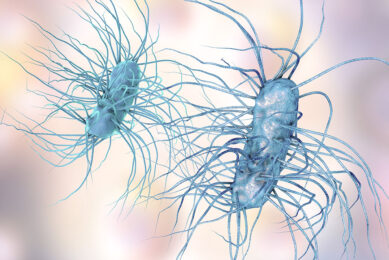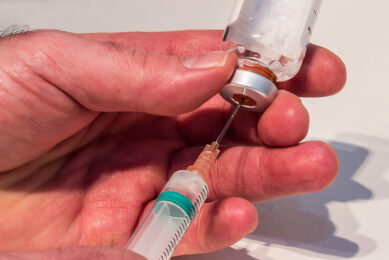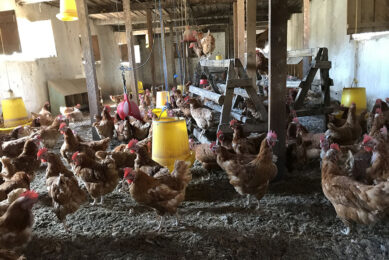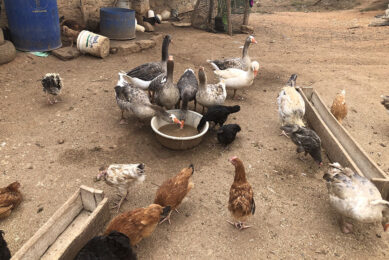Moulds and mycotoxins – a never ending story
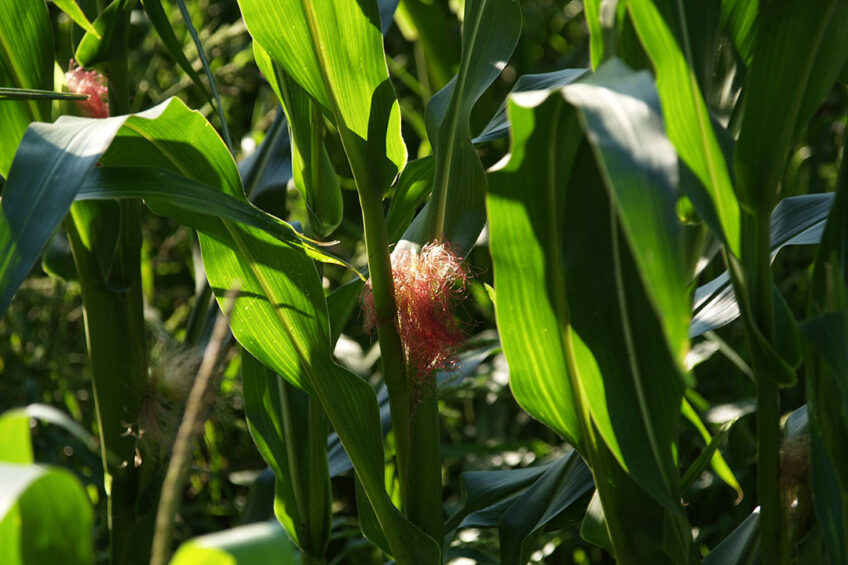
Mycotoxins are globally the most frequently occurring undesirable contaminants of animal feeds. Moulds and mycotoxins affect feed quality, feed utilisation and subsequently animal health and productivity at different levels. There are numerous strategies available to mitigate the negative impact of mycotoxins but what should you implement and when?
During the last decades, mycotoxins have gained global attention as the most frequently found undesirable contaminants of animal feeds. Mycotoxins are produced by diverse fungal species occurring naturally in the environment and are characterised by a high diversity in their chemical structure. Moulds and mycotoxins affect feed quality, feed utilisation and subsequently animal health and productivity at different levels. In farm animal practice, intoxications caused by mycotoxins were initially only accidentally reported by veterinarians. In the last decades, however, the significant increase in feed contamination with Fusarium mycotoxins at the pre-harvest stage, has increased the awareness of subclinical effects exerted by low concentrations of mycotoxins readily occurring in the daily diet of animals. Adversity of this undeniable feed contamination is a risk for all animal species, including all farm animals and farmed fish, as well as companion animals such as horses and pets.
Mycotoxins are also of importance as undesirable, and potentially carcinogenic contaminants of common food commodities including cereals and grains, fruits, spices and nuts and products thereof intended for human consumption.
Fungal invasion and plant susceptibility
Mycotoxins are produced as secondary metabolites of diverse fungal species and fungal invasion of a crop can occur at the pre- and post-harvest stage. While successful mitigation strategies are available to prevent fungal growth at the post-harvest stage during storage and processing, the prevention of fungal invasion under field conditions at the pre-harvest stage is a remaining challenge. Intensified plant production, plant genetics and cultivation methods including minimum tillage (to prevent soil erosion) are known factors that increased the vulnerability of cultivars to fungal invasion and subsequently increased the mycotoxin burden. The use of antifungal agents is restricted to certain times of plant growth and hampered by weather conditions, the structure of (leafy) plants and the risk to induce resistance to common antifungal agents. Soil management, crop rotation and lower seeding density are known to reduce fungal invasion. Moreover, optimising harvest times and cleaning of small grains after harvest are known strategies to reduce the mycotoxins burden of feed materials prior to processing. The most prominent factor driving fungal invasion and mycotoxin contamination, however, is the global climate change. Increasing temperature and draught, but also heavy local rainfall and flooding, are considered as unchangeable threats to plant health and subsequently fungal invasion and mycotoxin contamination.

Masked mycotoxins and multiple exposure scenarios
The term masked mycotoxins had been coined following the observation that in controlled feeding experiments naturally contaminated diets seem to show higher adversity in animals than experimental diets prepared with crystalline, purified mycotoxins. The initial explanation of this phenomenon was that precursors of the known mycotoxin under consideration and the fact that fungal species often produce more than one toxin using different synthetic pathways. In the last decade, and with the advancement of analytical methods, it appeared that most of such masked mycotoxins are plant-derived conjugates of known mycotoxins, mainly with one or more glucose molecule, as first described for deoxynivalenol (DON). Further analytical testing indicated that indeed in naturally contaminated materials, many Fusarium toxins occur in different forms (so-called modified mycotoxins) originating from plant metabolism of fungal toxins. The currently known structures and the calculation of total diet contamination and toxic equivalent factors is summarised for various Fusarium toxins in recent EFSA Opinions addressing among others deoxynivalenol, zearalenone, and HT2/T-2 Toxin.
Animal exposure and primary and secondary health effects
Adverse effects of mycotoxins in animals depend on diet composition, total mycotoxin intake and duration of mycotoxin exposure in the life-cycle of an animal. In the initial phase of mycotoxin research, interest focussed on acute clinical intoxications characterised by significant and visible organ damage resulting in the classification of hepatotoxic, nephrotoxic or teratogenic mycotoxins. Soon it became evident that many mycotoxins exhibit also immunomodulatory or immunosuppressive effects, cause cellular oxidative stress, and affect the reproductive system. In recognition of these detrimental effects of mycotoxins, in many countries feed quality programs based on (national) statutory limits were established to prevent significant adversity on animal health and well-being. The statutory limits are generally based on the toxicological (dose-response) assessment of a single mycotoxin. In real life, however, animals are given a mixed diet, containing mycotoxins from different sources. Subsequently, with feed quality programmes in place, the interest focusses now on the assessment of real-life exposure scenarios for mycotoxins in (farm-) animal populations under current animal feeding regimes.
Mycotoxins in pigs and poultry
With the first investigations demonstrating that Fusarium mycotoxins (deoxynivalenol, nivalenol, fumonisins and others like patulin) affect intestinal integrity even at low feed concentrations thereby inducing gut leakage, a new phase in mycotoxin research emerged. Gut leakage cam facilitate the translocation of pathogens, endotoxins and other (bacterial) antigens form the intestinal lumen into the submucosal tissue, and ultimately into the blood stream. As the intestinal tract is also the largest immune organ of the body, an impaired intestinal barrier initiates a cascade of events resulting in a chronic inflammatory syndrome. Indeed, further research demonstrated that Fusarium toxins like deoxynivalenol (which is often used as a model compound) affect almost all functional components of the intestinal system, including changes in the microbiome, the production of mucus and the adherent defensins (endogenous antimicrobial peptides), the integrity of the intestinal barrier with its tight junction network, protective efflux carrier system and ultimately the architecture of the intestinal villi, the visible sign of damage of the intestinal tissues. The overall and economically important result is an impaired nutrient utilisation, a reduced growth rate and lower productivity of animals that appear at first sight clinically healthy.
Chronic, subclinical inflammatory reactions also decrease the resilience of animals to infectious disease (resulting in an undesirable high use of antibiotics) and even the ability, to react with the required immunological response to vaccination programmes. Impairment of gut health and the risk of a persistent inflammatory syndrome is also an animal welfare concern, as it may lead to (endotoxin-induced) inflammation and vascular endothelial damage at tail tips, ears and claws.
Mycotoxins in the diet of ruminants
While in monogastric animals the intestines are a target site for mycotoxin ingested with feed, in ruminants the ruminal microbiome (rumen microorganisms) is the first site of exposure. The ability of rumen bacteria to enzymatically degrade and inactivate many mycotoxins, established the assumption that ruminants are less sensitive to many mycotoxins known to affect the health on monogastric animals. However, the real-life exposure scenario of ruminants very often includes preserved feeds such as silages and haylage. During storage, these feed materials are regularly colonised by Penicllium and Aspergillus and other fungal species (up to 80 fungi and yeasts species have been reported) which are soil-borne and are introduced during the harvesting process. Many of these fungi and yeasts are acid tolerant and micro-aerobe and hence easily adapt to the silage environment. Perhaps the most prominent example of silage moulds is the Penicillium roqueforti group, able to produce a variety of mycotoxins (among others mycophenolic acid, patulin, and penicillic acid) exerting strong antimicrobial effects. Destabilisation of the rumen microbiota impairs rumen fermentation and fatty acid production and increases the risk for rumen acidosis. Typical signs of a persistent (subclinical) rumen acidosis are wasting, lameness and reduced fertility, increased somatic cells counts and mastitis and a reduced milk yield, particularly in high producing dairy cows. Again, the impact on animal health and well-being, and the economic losses associated to mycotoxin exposure are a major concern.
Mycotoxins in the food chain
The most prominent example of a human health concern is the contamination of dairy milk with Aflatoxin M1, a main metabolite of Aflatoxin B1 contaminating diverse feed and food commodities. Aflatoxin M1 retains the mutagenic potential of aflatoxins and is probably also carcinogenic when exposure occurs in the early phase of life. As infants are often high consumers of dairy milk products in comparison to their body weight, strict statutory limits for AFM1 have been introduced for all products intended for infant nutrition as a precautionary measure. In addition, several countries have also established statutory limits for other mycotoxins that may occur in edible tissue of animals (for example Ochratoxin A, which has a very long serum half-life and accumulates in kidneys of exposed animals). However, a comparison of the exposure levels for all mycotoxins revealed that animal-derived products (except for AfM1 in dairy milk) only contribute a small percentage towards the overall human exposure to mycotoxins from food and beverages.
Species-specific approach required
Mycotoxins are globally the most frequently occurring undesirable contaminants of animal feeds. The lack of efficient measures to prevent fungal invasion and mycotoxins contamination at the pre-harvest stage under current agricultural practice and the ongoing climate change that increase the vulnerability of crops to fungal invasion, make it unlikely that effective avoidance strategies can be implemented soon. In turn, numerous strategies to reduce the impact of mycotoxins on animal health via functional feed additives have been developed. Such mitigation strategies require a species-specific approach and should consider all exposure scenarios even specific transgenerational transmission routes such as the intra-uterine, intra-ovum and early life exposure with colostrum and milk.
Literature references available on request.
Author:
Prof.em. dr.J. Fink-Gremmels. Utrecht, The Netherlands




